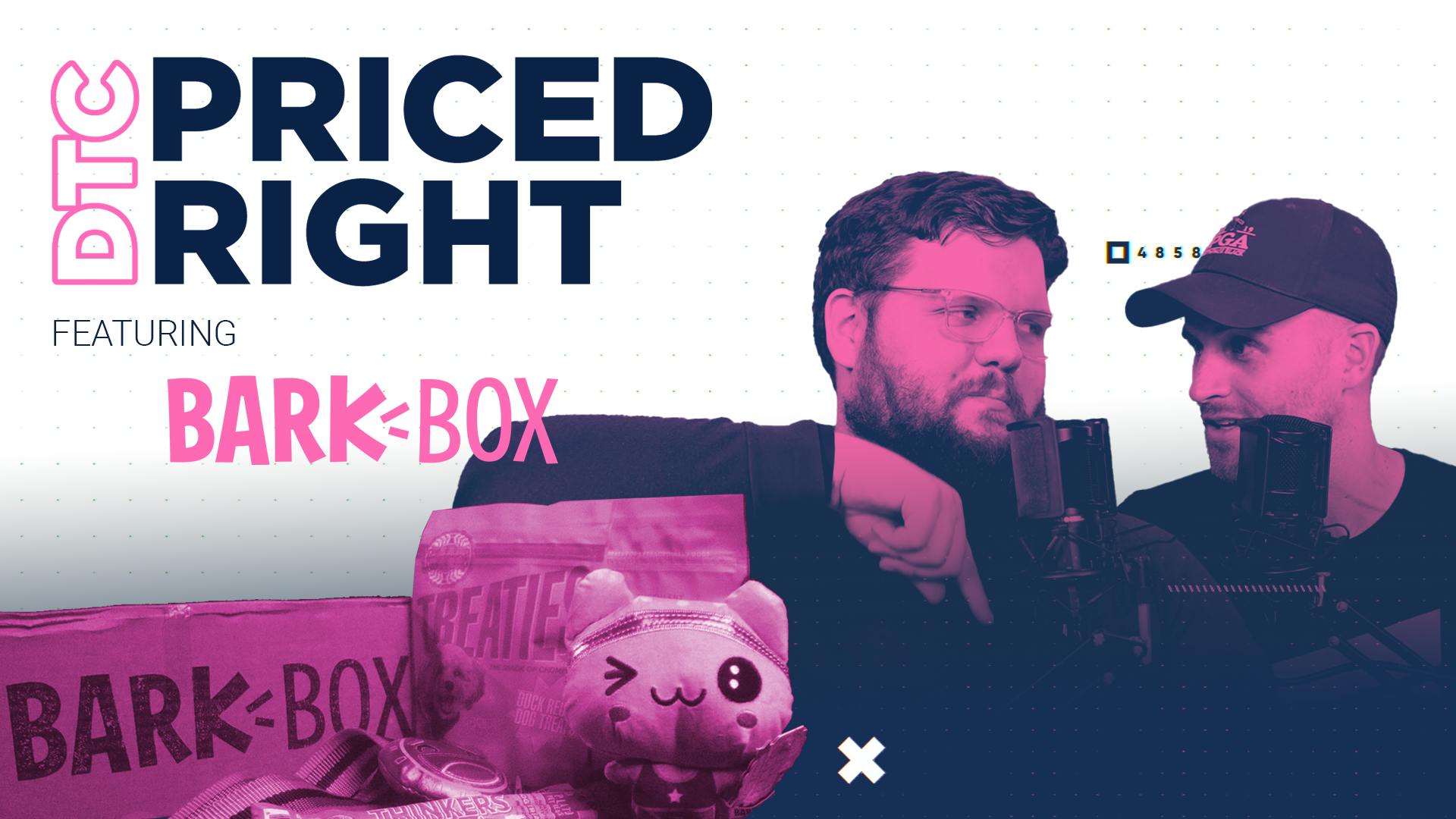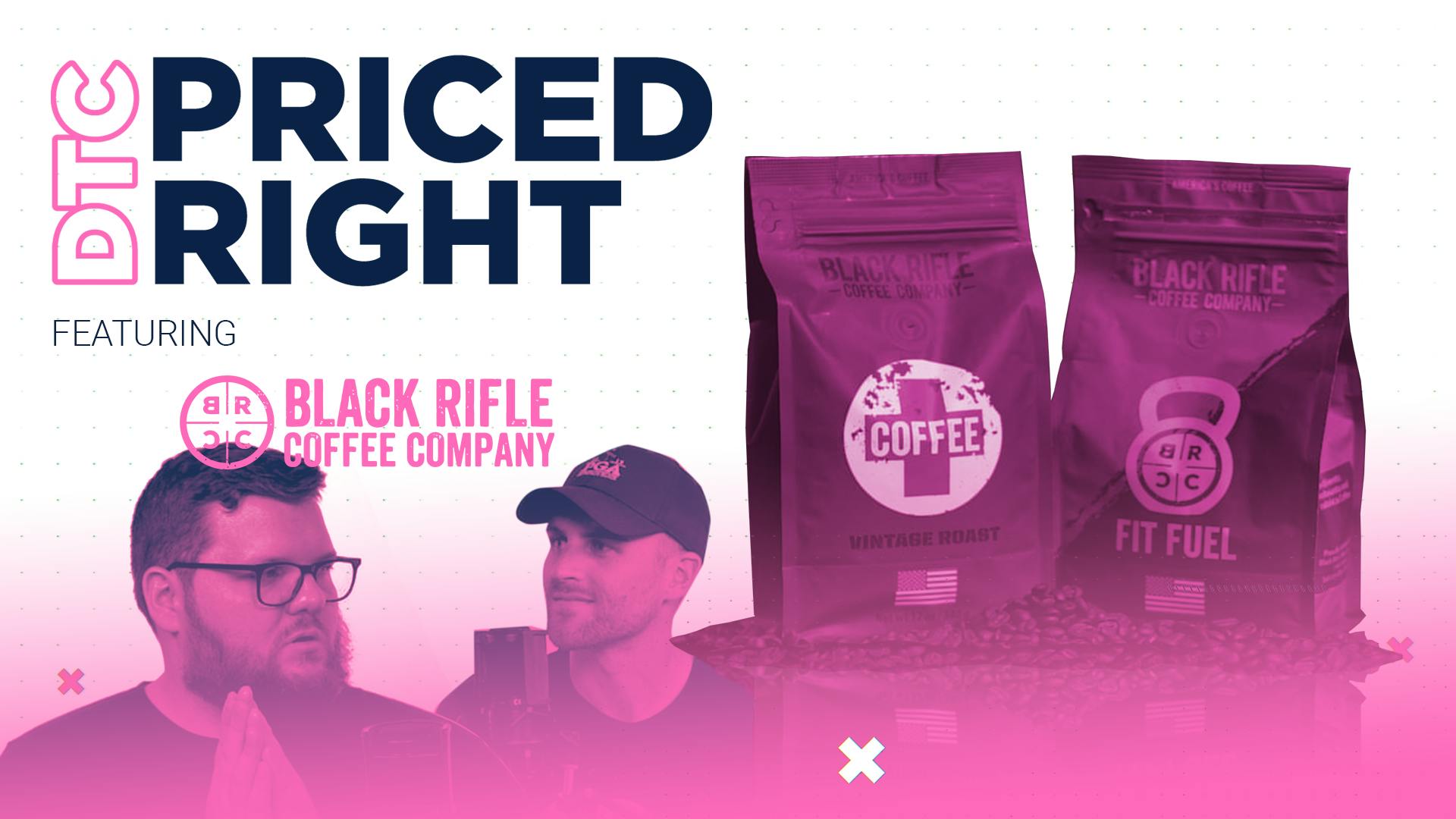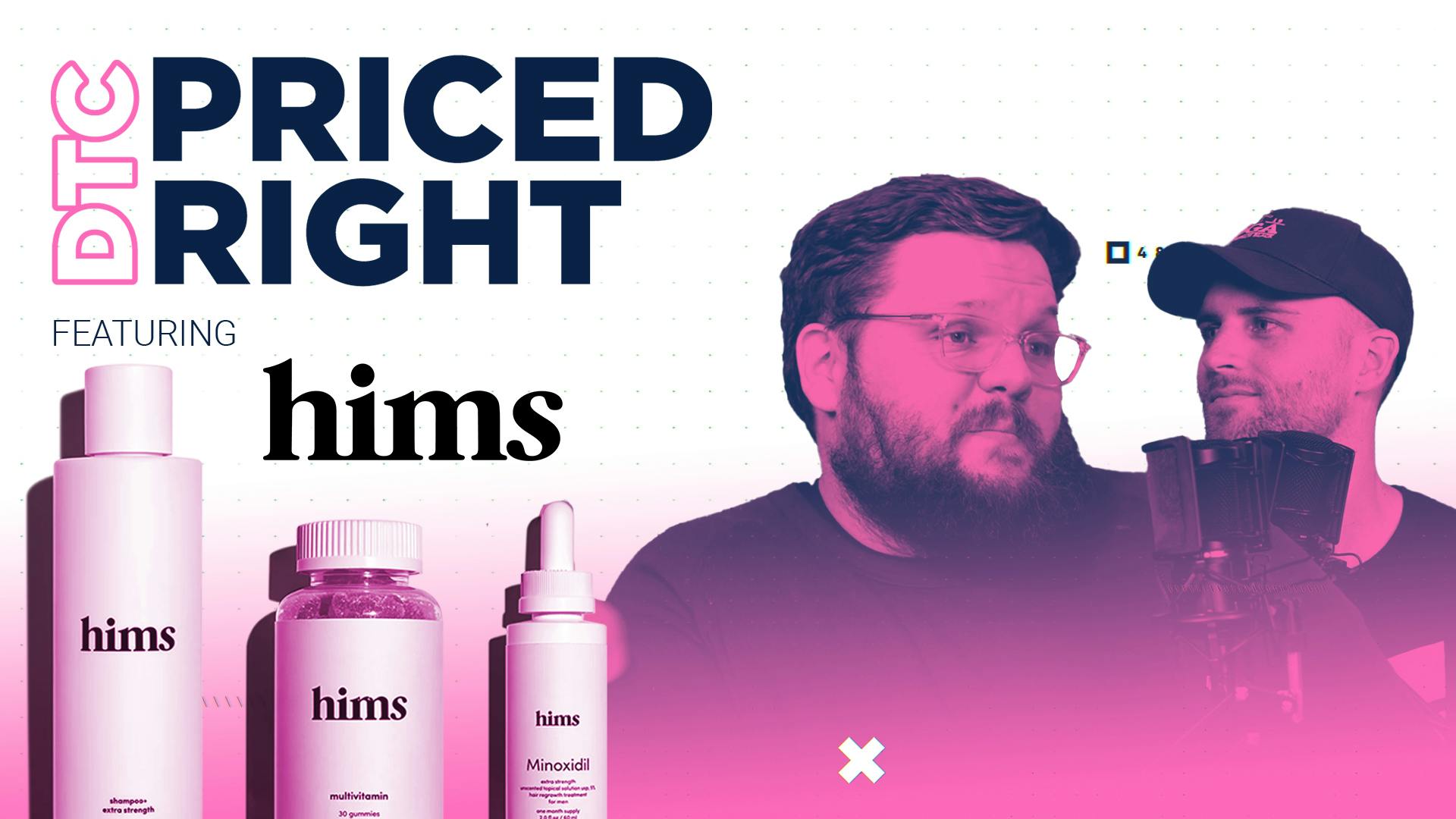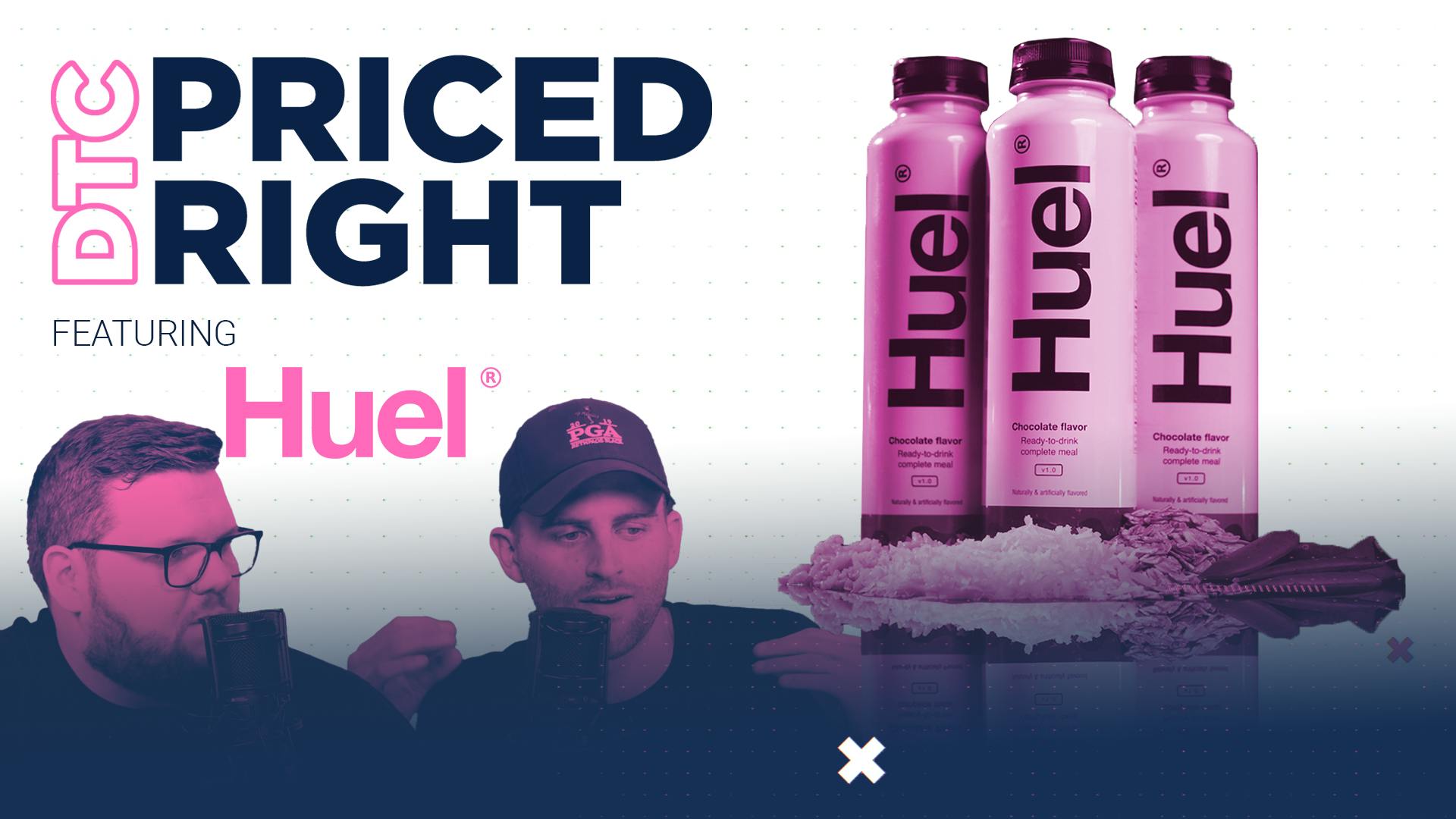
Is Art of Sport's pricing a slam dunk?
This episode might reference ProfitWell and ProfitWell Recur, which following the acquisition by Paddle is now Paddle Studios. Some information may be out of date.
Please message us at studios@paddle.com if you have any questions or comments!
Below are some valuable takeaways you can use for your own business:
- Spokespeople can help immensely with willingness to pay.
Influencer marketing does help. A very positive affinity for a spokesperson can bring up to 35% higher willingness to pay. If you’re able to have a famous spokesperson, don’t be afraid to do it. However, your spokespeople don’t have to be famous. You can also utilize experts in the field, or manufacturers, etc.—these spokespeople can defend the value of what you're offering. - Test making discounts more concrete.
Humans have a difficult time contextualizing percentages. You’re losing customers in the time it takes them to figure out if the discount is worth it or not. Make it easy for them. We understand dollars off. We understand free items. Appeal to what your customers' brains will most easily connect with. - Optimize social proof with depth to boost value.
Highlighting reviews is great and you should do it, but consumers are getting so used to them, that their impact is no longer very significant. However, our data also showed that incorporating deeper case studies increased willingness to pay by 10-20%. Offer access to specific case studies or client problems that were solved by your product.
Art of Sport
Sports are ingrained in our culture on a global scale. Our favorite athletes are household names and influence everything from the teams we cheer for, to what we put in and on our bodies.
Today, sports and hygiene industries combined are worth close to $700 billion. However, until recently there hadn’t been a line of products that had taken advantage of combining these two industries. That is until Art of Sport, a personal care company that produces a unisex line of body and skin care products marketed toward athletes.
Founded in 2018, by Matthias Metternich, Brian Lee, and the late Kobe Bryant, Art of Sport came to be after an unplanned trip to CVS. Matthias and Brian had forgotten their sunscreen so they went in search of some, only to find that all the options said “sport” on them. For the life of them they couldn't figure out which one was better, or what differentiated them. Each sunscreen listed the same ingredients and formulas. Realizing these weren’t actually sports’ brands, it struck them that there wasn’t a single brand specifically formulated for sport. So, they set out to create one. Their goal: to provide innovative body care products with integrity and efficacy designed for sports performance.
Art of Sports' success
There’s two main components that led to Art of Sport’s success:
One, they had the advantage of being well-known and loved by athletes, with their following already in the hundred of millions. By utilizing positioning and a niche of athletes to stand out in the market, they nailed it.

Second, the bar was set really low in a substantial category, meaning there was a void in the industry that they were able to fill and dominate because they were experiencing it, firsthand—not only were they part of the industry, they were also consumers. Because of this they worked hard to keep their customers at the center of their products and brand innovation strategies.

It’s that commitment that has enabled Art of Sport to create a complete unisex line of body and skincare products designed specifically for athletes—by working with the best scientists and best athletes. Art of Sport products are infused with carefully chosen natural botanicals, formulated without Parabens, sulfates, and are cruelty free. Art of the Sports product line includes everything from shampoo & conditioner, to body wipes. Men and women alike, love them.
With a phenomenal product, top scientists, the approval stamp of world-class athletes, thousands of five-star reviews, and a recent, second round of funding of close to $19 million: It’s game on.
The names of the game
Influencers are basically modern spokespeople. There are a lot of brands that are associating themselves with professional athletes, like Art of Sport. Whether we realize it or not, many of us have been motivated into a purchase based on the opinion of a personality we trust. I bought a Vitamix blender after seeing Joe Rogan make his morning shake.
Prior to this, I didn't consider myself an "influence-able" consumer. I don't click on Google ads or targeted messages, but I just bought Magic Spoon cereal because of a podcast. I'm constantly impacted by ads that I hadn't even viewed as ads, because they're coming from people I've started to feel that I know.
Art of Sport has mastered the art of endorsement because their spokespeople go beyond just being some token figure. They're also a part of their target market. Of course, they'd love to make sales beyond just athletes, but they're clearly appealing to folks who love sports and will appreciate people like James Harden. These consumers will also have run into some of the same kinds of problems as professional athletes, because they work out or dabble in sports.
The whole situation reminds me of Bevel, a razor that was created to specially address the different hair type of black men. These companies combined quality products and niche markets with spokespeople to create a compounding growth opportunity.
Let's dive into their pricing page.
Pricing Page
Their pricing page is very quickly off to a good start. You've got Papa Harden front and center, as well as a good green and black design (which we know I love). One unique feature that I also really enjoy is the incorporation of these reviews. It's a clean website that takes advantage of all the powerful endorsements they have.

Also of note is the box creation available on this website. It's better than most DTC brands we see. Many companies have a "subscribe and save" pitch that offers consumers a common combination of products for a discounted price. Art of Sport forces you to choose at least two items, and then allows you to include additional products for a lower price.

Of course, I always advocate for a flat dollar amount here, just for clarity. It's a little bit hard to predict what your final cost will be as you pick, but there's still a very linear purchase path. You can pick a deodorant, and then easily be directed to choose a body wash, block of soap, face lotion... it goes on. All of a sudden, I have four great items and I'm ready to check out. This differs from most DTC brands, especially in the beauty and hygiene space, which come across as very fragmented. Art of Sport feels more curated and keeps people moving.
The one thing that I think these guys can improve on is optimizing for term. I know, you're probably getting tired of us saying that. You should just do it. It's something that we see so often in DTC, and these guys are already shipping every two months. Give an incentive for six months. Give an incentive for a year! Whether it's a dollar off, a discount percentage—whatever. That little push forward could help lock me in for six months and get a much higher LTV, which is so powerful.
Let's see the data.
Where does our data come from?
Here at ProfitWell, our Price Intelligently software combines proprietary algorithms and methodologies with a team of pricing experts who think about this stuff more than anyone else to help companies optimize their monetization strategy. We do this by going out into the market and collecting data from current and prospective customers, having the ability to collect data from everyone, from a soccer mom or dad in the middle of Kansas, all the way to a fortune 500 CIO in South Africa. We then take that data and run it through our algorithms and analyze it in every direction to determine a company's ideal customer profiles, as well as which segments value, which features and which segments are willing to pay more, all in the spirit of determining how a company can use monetization for growth.
Spokespeople can help immensely with willingness to pay
We've known this from the start, but spokespeople can help immensely with willingness to pay. To prove it, we used a couple of spokespeople over a couple of different products and measured the affinity that the person responding had for that particular spokesperson. We then measured their resulting willingness to pay and compared all of them against the median.
What's funny here is that even if the person had a negative affinity for the actual spokesperson, their willingness to pay isn't that effected. It's almost a no-loss situation, or a very minimal decline. Then we take a look at neutral folks—those people who might recognize the spokesperson but not really care about them. It still boosts willingness to pay by 10-15%. There's just this element of ethos that attaches value to fame.

A very positive affinity can bring up to 35% higher willingness to pay. It's crazy. One way to take even more advantage of this is to recognize the popularity and brand certain products as, say, a James Harden Starter Pack. Then maybe it's got a printed letter from James Harden or something like that.
Beyond this particular example though, the big takeaway is that influencer marketing is super helpful... in almost every way. Don't be afraid to have someone who's famous—or even not that famous—in a particular space to shout out the benefits of your product. Use spokespeople to your full advantage and don't be afraid to attach some prominent faces to your brand.
Spokespeople don't have to be influencers or verified on Instagram. Maybe you're a razor manufacturer and you reach out to an unknown artist who says, "I've been making razors for a 100 years and this is really, really cool." It's an extreme example, sure, but we love hearing the approval of our fellow humans. Who knows, maybe you could make someone a celebrity through their testimonial work for your company!
Test making discounts more concrete
Next up, I'd recommend testing more concrete discounts. They already had a discount that appeared depending on how many things you added to your cart. They already ship every two months. There's an awesome opportunity for them to go longer with their terms and give bigger discounts—even free items or free months. Maybe if you sign up for six months, you could get a limited edition product, especially branded by James Harden.

For this data, we measured the effectiveness of the take rate of the offer, based on how the offer was presented. Essentially, we see that if you offer a percentage off, the take rate was much lower than if it was "X months free" or "X dollars off." Just make sure you're offering something concrete! Humans have a hard time contextualizing percentages. It's not that we don't understand them, it's just that you're losing customers in the beat it takes to figure out if the percentage discount is worth it. It comes back to that famous JC Penney study: They offer two for 50% off or two for one, which is the exact same thing. But two for one performed at a 30%-40% higher take rate.
Optimize social proof with depth to boost value
The final thing I want to note here is optimize social proof for depth to boost value. The Art of Sport website does a great job of highlighting reviews that constantly remind you that this is credible. My one critique is that these testimonials could be expanded on every more, offering access to specific case studies or client problems that were solved by the product.

When we measured willingness to pay data for products backed by social proof, we found that customer ribbons and testimonial quotes didn't have a huge impact. We've gotten so used to them that they don't sway us much either way. When you incorporate a case study, however, you see an increase of 10%-20% in terms of willingness to pay.
Recap
- Spokespeople can help immensely with willingness to pay. Whether you find influencers, experts in the field, or manufacturers, these spokespeople can defend the value of what you're offering.
- Test making discounts more concrete. Human beings are numeral illiterate. We understand dollars off. We understand free items. Appeal to what your customers' brains will most easily connect with.
- Optimize social proof with depth to boost value. It's really easy to put simple reviews, but consumers are getting burnt out of these quotes. You still need them, but do some deeper case studies that people can see themselves in.
Who's up next?
Next week, we are going into the $40-billion women’s reproductive health space. We’re going to be talking about Cora, a subscription brand of organic menstrual products.





